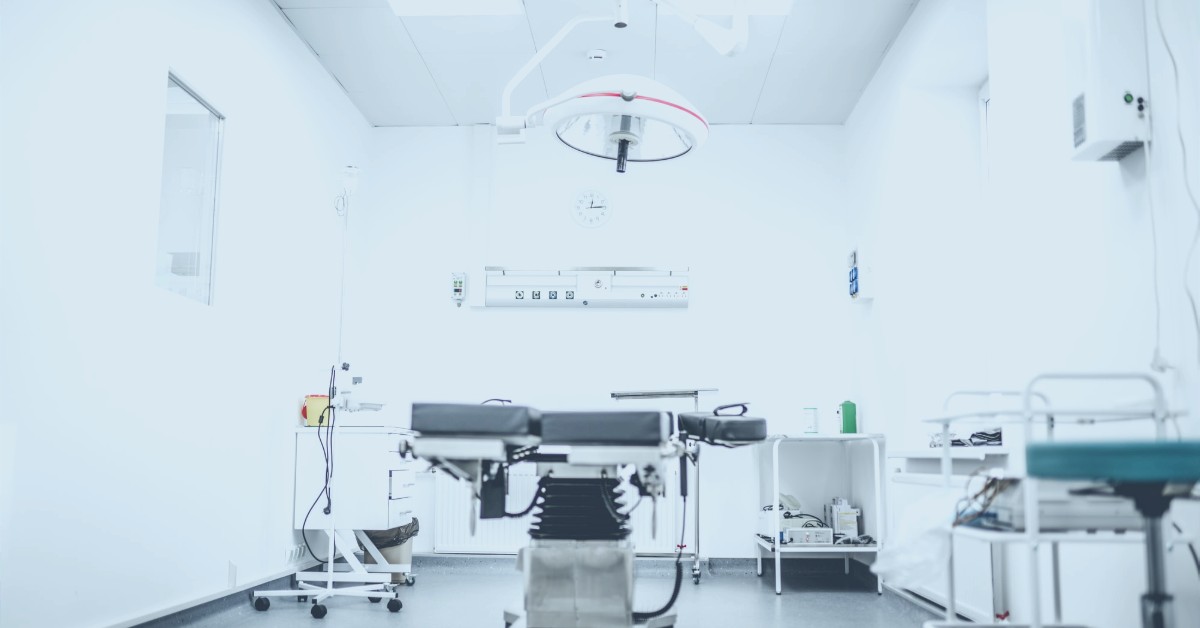9 min read
Louisiana Telemedicine: Regulations, Policies, Rules, and Law | Blog
 Michael Hsu
:
6/6/20 8:36 AM
Michael Hsu
:
6/6/20 8:36 AM

Louisiana has been improving telemedicine accessibility within the state since 2014, when the Louisiana Legislature enacted the Louisiana Telehealth Access Act. During the Legislative session in 2014, telehealth was said to be ‘extremely valuable’ since it promotes access to care and the improvement of the overall health outcomes.
It is no wonder that telemedicine is seen as valuable in Louisiana, considering how much rural and medically underserved areas the state has. The overall delivery of care through telemedicine is more effective than any other form of medical assistance in such areas.
Many people have limited access to traditional health care, as the Act suggests, and telemedicine is a promising way of getting fast and secure help for those who need it the most. Through Louisiana telemedicine, citizens can receive aid much more quickly than they would if they opted for traditional health care. This is joyous news in terms of being able to discover illnesses and getting diagnosed on time. It contributes to improved health and less costly treatments due to early treatment.
To understand better how far Louisiana has come in its journey to telemedicine acceptance, we should take a closer look at regulations, policies, rules, and law.
Louisiana Telemedicine Parity Law
The first private payer parity law concerning telemedicine in Louisiana was introduced in 1995, making the state among the first ones to hop on board with telehealth. It required private payers to reimburse telemedicine the same way they did for in-person medical assistance.
When the Louisiana Telehealth Access Act got enacted, telehealth was defined as a “mode of delivering healthcare services that utilizes information and communication technologies to enable the diagnosis, consultation, treatment, education, care management, and self-management of patients at a distance from healthcare providers.”
The 2014 Telehealth Access Act also forbade patients from demanding in-person visits as a requirement to pay for telemedicine services.
Louisiana Telemedicine License
Louisiana is one of the nine states within the U.S. that require health providers to get a telemedicine license in order to practice it. Getting a Louisiana telemedicine license can last anywhere between a couple of weeks and a few months because each application has to go through a thorough examination. Depending on whether any issues arise during the application period, the candidate may have to wait even longer for the request to be evaluated.
It is advised that the applicant requests criminal background materials as soon as possible because it can take months to process a check on it. In case the candidate was involved in malpractice, they would have to give a detailed explanation on it and expect that the application process will take even longer to end.
Once the candidate gets notified that they are eligible for the telemedicine license, they need to respond within six months. Otherwise, the application will be dismissed, and they will have to reapply.
Required Qualifications for Telemedicine License
If you’re looking to apply for a Louisiana telemedicine license, you should know which requirements you have to meet in order to be eligible for the permit. The most important ones are:
- Paying the fee of $300 that isn’t refundable
- Not being enrolled in any postgraduate medical training program
- Completing the Telemedicine Rules Review Course
- Being a U.S. citizen or having an up-to-date legal permit to live and work in the United States issued by the Immigration and Naturalization Service
- Having completed one year of ACGME approved residency training in either Canada or the United States
- Having a license to practice medicine that was issued by a State medical authority
- Having a Doctor of Medicine degree in English that you received from a medical school approved by the Board
- Being at least 21-years-old and having a good moral character
- Passing the State Board examination, COMLEX-USA, National Boards parts 1, 2, and 3, NBOME, FLEX/USMLE steps 1, 2, and 3, or a combination of these
- Having a valid, up-to-date medical competency certificate
Louisiana Telemedicine Laws
In 2016, the ‘Act’ HB 570 was signed into law by the governor of Louisiana, which states that telemedicine-practicing physicians are no longer required to have a contract with in-state providers, nor do they have to have an office within the state.
With the arrival of the new law, practice standards for telemedicine were also revised by the Board. The revision imposed new rules on remote prescribing of controlled substances and changed the requirements for a telemedicine license.
The most valuable parts of this law that you should pay extra attention to include:
- The standard of care has to be the same as if the healthcare provider is seeing their patient in-person. Video no longer has to be utilized—audio conversations are estimated to be enough. The healthcare provider needs to determine whether the quality of care is the same as it would be in-person once they examine the patient’s medical records.
- Disclosures remain the same, meaning that the healthcare provider is obliged to provide the patient with certain information, such as their field of practice, their name, contact, and Louisiana medical license number, as well as to explain to them how to receive emergency care, what to do in case of technology failure, what the privacy practices entail, etc.
- The healthcare provider must have a valid telemedicine license.
- The healthcare provider must keep a record of all interactions with their patient and make them available to the Board if they request so. Video, electronic, audio, and others are confidential medical records that are subject to all applicable federal and state laws.
- Remote prescriptions were not altered by the Act.
The Louisiana State Board of Medical Examiners (LSBME) does not recognize emails, telephone calls, or in-person consultations as telemedicine. This means that Louisiana telemedicine rules only allow for two-way video and audio calls as a way of practicing telemedicine. If you’re curious to know why that is the case, it’s simply because other communication channels aren’t considered safe.
LSBME also forbids controlled dangerous medicine prescriptions without conducting physical examinations first.
Who Can Practice Telemedicine in Louisiana?
The Louisiana State Board of Medical Examiners recognizes the following licensees as healthcare providers under the telehealth law:
- Licensed midwife
- Physician assistant
- Offshore health service provider
- Occupational therapist
- Licensed or certified athletic trainer
- Podiatrist
- Licensed respiratory therapist
- Medical psychologist
- Licensed radiologic technologist
- Licensed perfusionist
- Licensed clinical laboratory scientist
All of the listed healthcare providers need to comply with the Louisiana telemedicine laws. They are obliged to follow these guidelines:
- Healthcare providers must be licensed in Louisiana in order to practice telemedicine in the state of Louisiana
- Healthcare providers follow the guideline only if they are able to provide the patient with the same standard of care as the in-person one.
- Telehealth practitioners should check in with the patient’s insurance carrier to understand the reimbursement better.
- Telehealth law compliance obliges health care practitioners to practice patient confidentiality.
Louisiana Telemedicine after the COVID-19 Pandemic
During the COVID-19 pandemic, the Federal Government issued a Notification of Enforcement Discretion for Telehealth Remote Communications During the COVID-19 Nationwide Public Health Emergency. It states that all Medicaid users will remain completely covered during the public health emergency.
Informational Bulletin 20-7 issued by the Louisiana Department of Health states that all telemedicine/telehealth users and practitioners are obliged to use HIPAA-compliant platforms in order to pursue telemedicine without any interruptions during the pandemic.
Being fully HIPAA-compliant, Curogram is the best way to face the COVID-19 pandemic while keeping in touch with your patients. Texting is the preferred way of communication in this day and age, and that’s why Curogram allows for efficient two-way texting with your patients. The success rate of the platform has reached its peak once client phone volumes were reduced by 50%, which empowered patient satisfaction to the fullest. Our platform also includes the most advanced appointment reminders on the market.
Curogram helps identify the patients that need testing the most, automates the screening process, and reduces the staff requirements by 75%. You can use the platform to its full potential by organizing remote workflows that prevent the spread of the virus and keep you up-to-date with all of the latest happenings.
Louisiana Medicaid Reimbursement
All Louisiana Medicaid users are covered in terms of live video consultations with their health care providers, health status monitoring, medication monitoring and dispensing, and sensor and activity monitoring. There is also no entailed reimbursement for the originating site.
What Louisiana Medicaid does include reimbursement for, though, are all services provided via an interactive audio and video telecommunications system. Reimbursement is also applied to distant site providers, but they can only receive it if they are enrolled as a Louisiana Medicaid provider.
Louisiana Medicaid excludes the store-and-forward reimbursement because the definition of telemedicine itself describes itself as ‘audio and video equipment permitting two-way, real-time interactive communication.’
Louisiana Medicaid Remote Patient Monitoring Policy
When it comes to patient monitoring, there are some strict policies that you should pay close attention to.
Sensor and Activity Monitoring
The monthly telecare services in Louisiana include:
- Training the recipient in the appropriate use of equipment
- Documenting and developing interventions based on collected data
- Analyzing data
- Storing and cleaning equipment
- Monitoring service activities
- Coaching and teaching recipients or caregivers
- Maintaining, furnishing, and replacing equipment consistently
In case your patient requires a computerized monitoring system that checks on activity and movement, the system is obliged to:
- Detect all movements or the lack of them
- Detect falls
- Include a push-button emergency alert system
- Monitor the points of egress in the patient’s house
- Detect whether the doors in the house are open or closed
Medication Monitoring and Dispense
Patients are required to have a remote monitoring system that is supposed to monitor the patient’s compliance with medication therapy. As soon as doses are missing or the system detects non-compliance with the therapy, the caregiver or provider is supposed to get notified.
Health Status Monitoring
The service is supposed to collect data to help the health care provider improve the recipient’s health and provide the recipient with consultation and education.
Providers’ Obligations
The provider needs to meet the following requirements:
- Be compliant with the Louisiana Department of Health regulations and rules
- Be enrolled as a Medicaid provider in order to provide services
- Be a licensed DME or a home health agency provider
- Be on the Freedom of Choice form as a listed provider of choice
PERS Providers’ Obligations
A PERS provider is obliged to meet the following requirements:
- Be on the Freedom of Choice form as a listed provider of choice
- Be compliant with the OAAS’ participation standards
- Be enrolled as the applicable provider type of Medicaid
Establishing a Doctor-Patient Relationship
For any telemedical practice, it is required by the state of Louisiana that a doctor-patient relationship is established first. This can be done by:
- Verifying the patient’s identity
- Conducting an appropriate examination of the patient that is determined by the Board
- Explaining all benefits and risks of different treatment options, as well as discussing any diagnosis
- Being available for follow-up care
- Giving a diagnosis that’s approved by accepted medical practices that may include mental status, patient history, and laboratory and diagnostic testing
- Creating a medical record
Prescription Requirements
If you need to prescribe medication to your patient, you should know that you aren’t allowed to proceed with it if you don’t have a valid Louisiana telemedicine license and if you haven’t seen your patient in-person in more than a year. If you do have the license but haven’t seen your patient in-person, you are allowed to prescribe controlled substances.
Have a Successful Telemedicine Start in Louisiana with Curogram
With the help of the world’s best texting app for medical practices, you can have a successful start with telemedicine in Louisiana. Curogram offers various features that aim to make the whole process of practicing telemedicine quick, easy, and efficient.
Using this impactful app, you will get many different benefits in the long run. You will get to dedicate more time to your patients or simply have more patients per day. When you work with non-telemedicinal solutions, such as Skype, the number of your patients per day is limited—you can’t choose to have more of them, nor can you choose to spend more time with them. Using such platforms would make a large impact on your revenue.
To make everything as simple as possible for you to handle, Curogram integrates with over any EHR, including:
|
Curogram EHR integrations |
|
|
eClinicalWorks |
Athena |
|
Epic |
Cerner |
|
DrChrono |
NextGen |
|
Practice Fusion |
CareCloud |
|
Kareo |
OfficeAlly |
If you want to take part in telemedicine in Louisiana the easiest and safest way, Curogram is the perfect solution for you. It comes with the most advanced automated reminders that ensure you don’t miss out on anything. You can set a reminder to notify your patient of upcoming activities 15–20 minutes before they start. When you’re seeing patients in-person, you have to remind them a lot earlier because of different obstacles, such as driving time.
Why You Should Choose Curogram
People choose Curogram because it was made to help you boost your revenue and get things done more quickly and thoroughly. There are over 5,000 medical professionals who fully rely on Curogram to allow them to focus their time on the patient instead of data entry.
You can start your Curogram journey in the blink of an eye, as our platform is integrated within 48 hours because of the proprietary integration technology backing it up. Our platform doesn’t rely on complex HL7 interfaces, which is exactly why it works so quickly.
These are the main reasons why you should choose Curogram:
|
Curogram allows for two-way SMS exchanges with your patients. |
Our platform was made to be accessible to people of all ages and education levels. All it takes to book a new appointment with you is for your patient to send a single text message. Using this method, they can also reschedule existing appointments and ask for more information on your services. |
|
Curogram integrates with your EHR with ease. |
As we’ve mentioned previously, our platform integrates with over 700 different EHRs. The importance of certified EHR systems is great, as they ensure full safety against any risks. |
|
Curogram allows you to send patient intake forms. |
You can proceed with sending intake forms either via text or secure web forms. The forms will come back to you, as a provider, automatically in a PDF form. |
|
You can set up automated reminders. |
As we’ve already mentioned, you can set up automated reminders for your patients that will ensure their presence at the consultation. Reminders set to 15–30 minutes before the beginning of the appointment are more than enough because outside factors, such as driving time, are non-existent in telemedicine. |
|
Curogram facilitates internal file sharing and communication. |
Your medical staff can feel free to share any types of files and communicate through our platform safely. This is the easiest and quickest way of exchanging information while handling more important things. |
|
Curogram lets you replicate real-life workflows. |
Using our platform, you can set up virtual clinics with virtual waiting rooms for your patients. We have many different wait room management tools using which patients can check-in and check-out with ease. Your medical staff will get used to this in the blink of an eye. |
Telemedicine by State
Don’t see your state? We just haven’t written about it yet! Stay tuned on our blog or check out our article on telemedicine reimbursement by state.
|
Telemedicine by State in the US |
|||
|
Nebraska |
|||
|
Alaska |
Iowa |
Nevada |
South Dakota |
|
Kansas |
New Hampshire |
||
|
Kentucky |
|||
|
New Mexico |
Utah |
||
|
Maine |
Vermont |
||
|
Connecticut |
|||
|
Delaware |
North Dakota |
||
|
West Virginia |
|||
|
Oklahoma |
|||
|
Mississippi |
Wyoming |
||
|
Montana |
Rhode Island |

Telemedicine in New Jersey: Law, Rules, and Regulations | Blog
New Jersey adopted a telemedicine parity law fairly recently. The law was passed after a year-long debate by New Jersey’s legislators and came into...

Telemedicine in Georgia: Law, Rules, Regulations, and Policies | Blog
Georgia was among the first states in the U.S. to embrace telemedicine as a valid form of providing patient care, back in 2005. Over the following...

